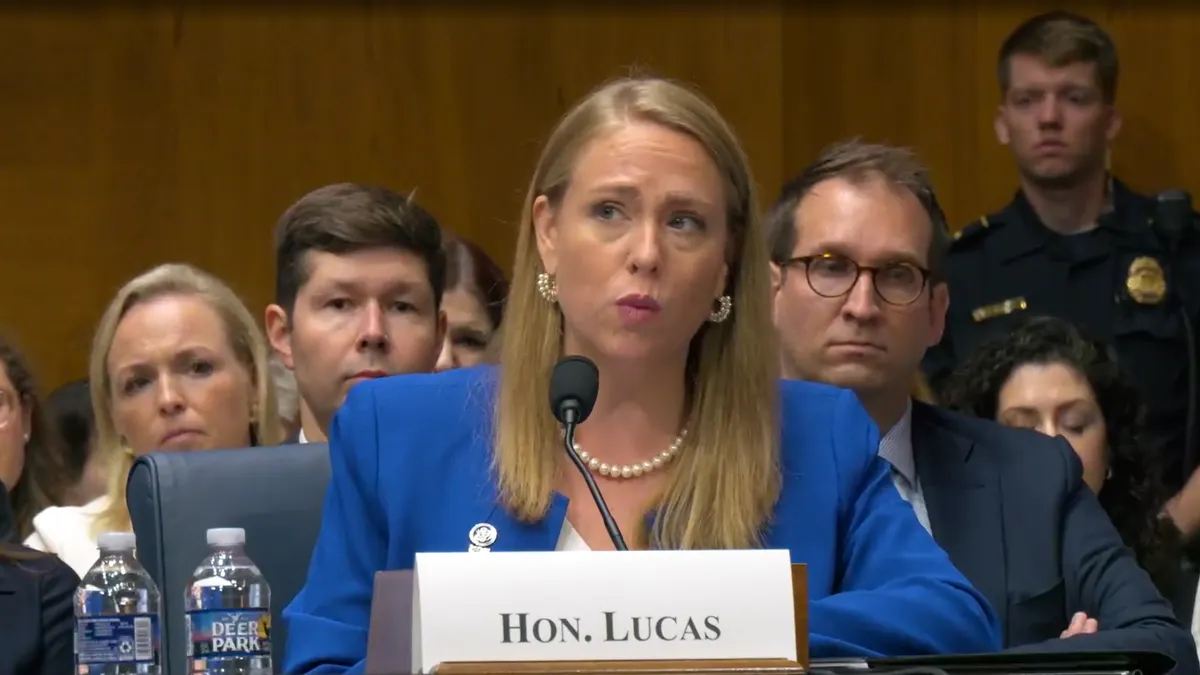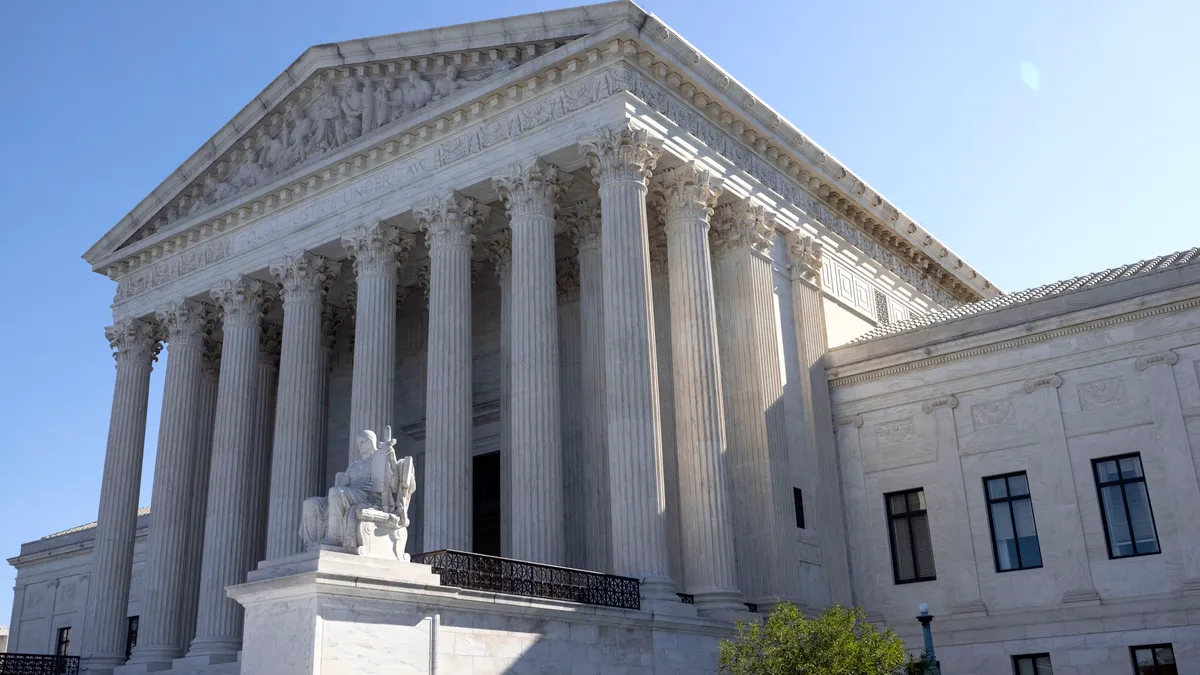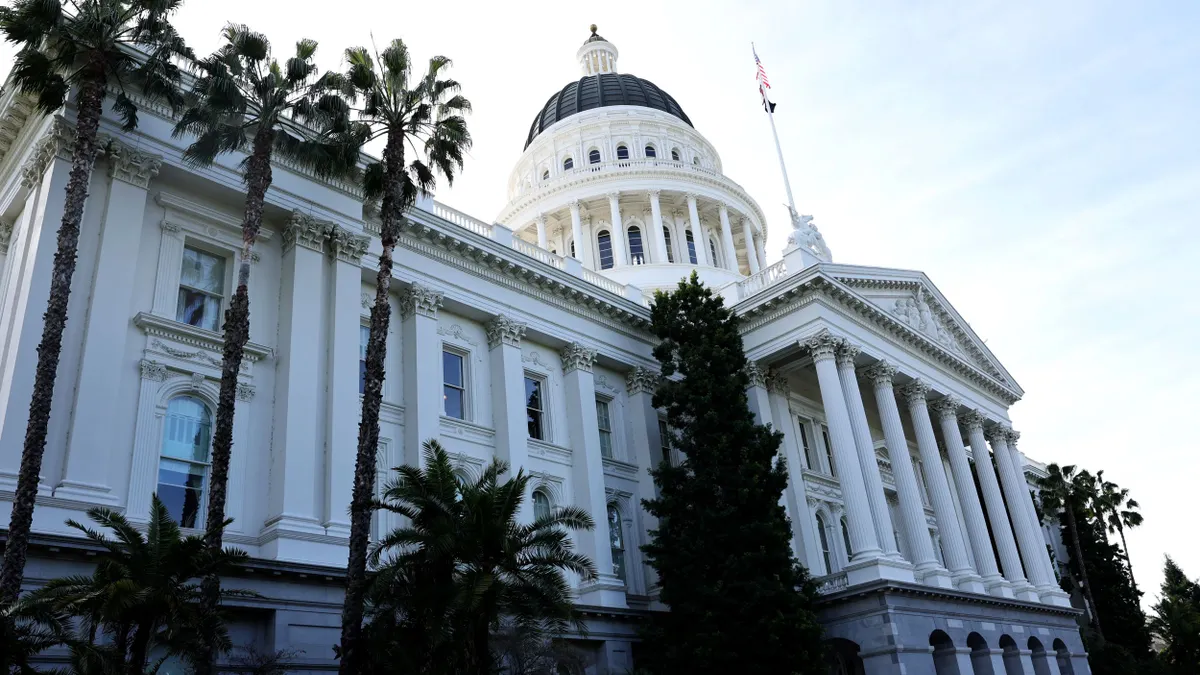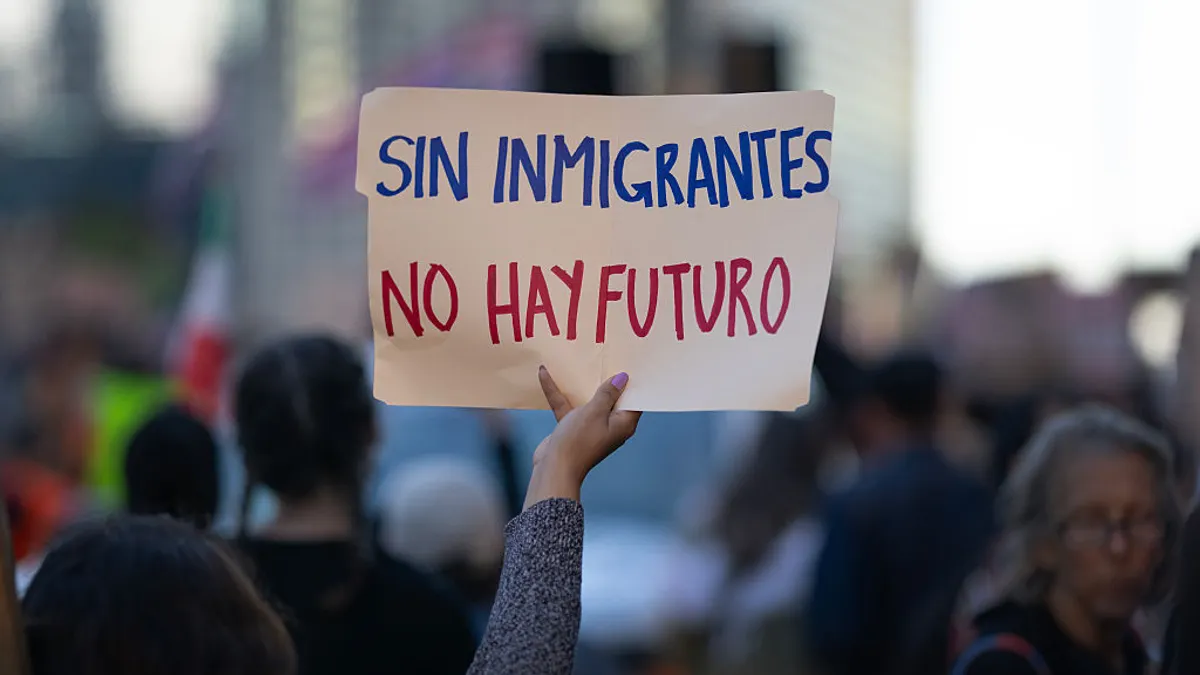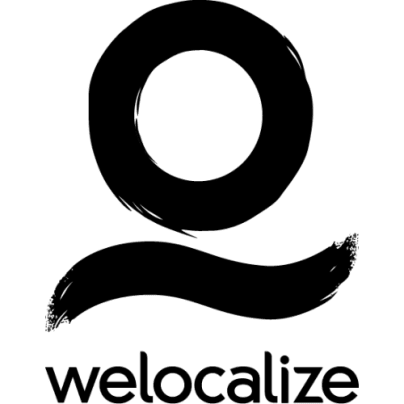With the government shut down, the U.S. Equal Employment Opportunity Commission’s office now sits largely closed — a symbolic cap to a year that saw the lowest litigation rate in 10 years, according to Christopher DeGroff and Andrew Scroggins, partners at Seyfarth Shaw, who spoke to HR Dive about the agency’s unusually sleepy year.
Fiscal year 2024 — which ran from October 2023 through the end of September last year — was “surprisingly sluggish” as well, which Seyfarth attributed to a lack of resources at the time. Kicking off in October 2024, the 2025 fiscal year appeared to be poised for robust enforcement. EEOC had a budgetary increase, a Democratic majority and a “brimming pipeline of charges,” Seyfarth wrote in an analysis.
January’s change in administration turned all that on its head. While close observers expected the chair and general counsel to be replaced, as is common with administrative changes, President Donald Trump waded into unprecedented waters by firing two Democratic commissioners, leaving EEOC with only two commissioners and no quorum.
The past year may have been slow with only 93 lawsuits filed — compared to 111 in FY 2024 and 143 in FY 2023 — but it nevertheless provided useful insight into where the agency plans to focus with a new, Republican-led quorum likely on the horizon.
Pregnancy, religion take center stage
The Pregnant Workers Fairness Act, which took effect in June 2023, became a major priority for EEOC this year. The agency filed 10 lawsuits under the PWFA and/or Pregnancy Discrimination Act, Seyfarth said, and a total of 37 lawsuits when sex discrimination is added into the mix.
PWFA was bound to get attention this year as a relatively new enforcement tool, Scroggins said, and one that employers may not have been sufficiently prepared for. Without a quorum to tackle more complicated and potentially feather-ruffling issues, the focus was also low-hanging fruit in that “there’s not really dissent over whether pregnancy discrimination is bad.”
This focus was also unsurprising in that it aligned with priorities laid out by Acting Chair Andrea Lucas. “This is an act that [Acting] Chair Lucas has been behind,” Scroggins said, pointing to Lucas’ pride in working as a commissioner while pregnant and having a child while in the role. “So I think it has personal appeal to her.”
By contrast, EEOC notably abandoned gender identity cases this year, which the agency had begun to pursue with more momentum in the past couple years following the Supreme Court’s Bostock decision. Not only did EEOC not file any new cases following the change in administrations, it also dropped pending investigations and lawsuits — a decision that has itself provoked legal action.
Lawsuits dealing with religious discrimination picked up in FY 2025 as well. The agency filed 11 such complaints, up from just four in FY 2024. With an explosion in religious bias charges following the COVID-19 pandemic, “It appears the backlog of EEOC religious discrimination charges has fed the EEOC’s litigation activity,” Seyfarth wrote in its analysis, pointing to Lucas’ August statement touting EEOC’s focus on religious rights.
Of note, racial and national origin discrimination is one area that gained little attention this year, with the agency filing just three such lawsuits, compared to 14 in the previous fiscal year. Two of the three were “grounded in theories of reverse discrimination,” Seyfarth noted, following on a Trump priority and announcement by Lucas to target “Anti-American bias.”
District offices stay in line
Beyond lawsuit type, Seyfarth’s analysis dug into other trends over the course of the year, including how filing rates varied across district offices and the types of employers EEOC targeted. Regionally, lawsuits across the country largely fell, while the Chicago, Birmingham and Los Angeles offices saw a modest rise. Perhaps more telling than the number of lawsuits, however, was the type of lawsuits — all in line with top-line priorities.
“There are some very strong personalities running many of these district offices — individuals that have been in their positions for not just years, but for decades,” DeGroff said. “That we didn’t see any breakaway litigation, any district filing a lawsuit that peeled away from what Acting Chair Lucas’s priorities are, to me, that was surprising in itself.”
The willingness to keep in line may be a downstream effect of the board’s unexpected firings in January, he said; given the administration has shown no hesitation in reframing the agency to its political liking at the top, “I think it’s reasonable to assume that anyone down the chain of command has to feel that.”
Small employers in the spotlight
The types of employers EEOC chose to make an example of over the past year also provided some insight into their process, the Seyfarth attorneys said. While EEOC has historically targeted large, household-name companies to maximize the deterrent effect of their cases, this year the agency pivoted “to a lot of less known employers of all shapes and sizes,” from large companies “all the way down to mom and pop operations that our research showed just barely got over the threshold of being an employer at all under the Civil Rights statute,” DeGroff told HR Dive.
While it’s unclear if that approach was by design, the takeaway should be that “all employers are fair game,” he said. No employer that still counts under the law should expect to fly under the radar.
The rise in charges against small or unknown employers may have led to another pattern that emerged this year: EEOC announcing pre-litigation conciliation settlements along with lawsuits and lawsuit settlements. By statute, Scroggins said, conciliation is confidential. EEOC needs an employer’s permission to make a public announcement. The employer may be willing to agree if they can obtain concessions in other parts of the agreement — or, DeGroff noted, some less savvy employers may not even know they are entitled to confidentiality.
“It’s a big deal for them to get a conciliation agreement publicized,” DeGroff said. “That’s a big win for them.”
Seyfarth also noted that 1 in 5 employers facing lawsuits were in the healthcare industry.
With a quorum, expect controversy
While EEOC has had a controversial year, those controversies have been unrelated to the actual lawsuits the agency has filed, which have largely reflected sex and pregnancy discrimination, disability, religion and more standard fare. The agency tapped the brakes in a few notable ways — like stepping back from LGBTQ+ rights cases and cooling on racial discrimination — but few lawsuits raised eyebrows.
That may change soon, with presumptive future commissioner Brittany Panuccio’s confirmation expected shortly, and a quorum set to be restored not long after. Employers should anticipate at least one case that involves discrimination stemming from DEI programming, for which Lucas and Trump have both set the stage.
“I fully expect that when we see the EEOC bring an unlawful-DEI-style case, it’s going to be systemic in nature,” DeGroff said, emphasizing that such a case would likely take some time to develop. “I think that it probably wasn’t ready for prime time in fiscal year 2025, but I would be very surprised if we don’t see litigation activity on this theory in fiscal year 2026.”



